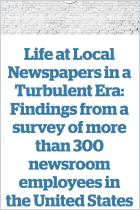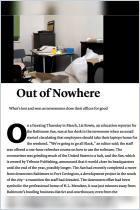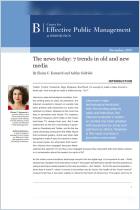
Article
What Happens to Democracy When Local News Dries Up
The end result is disasterous
The Washington Post,
2021
Recommendation
The Great Recession, the digital revolution and COVID-19 took a terrible toll on local newspapers across the United States. Beyond cities and their suburbs, much of America is now a “news desert,” lacking meaningful journalism on local issues, reports Margaret Sullivan in The Washington Post. Although local papers’ role as watchdogs and reliable reporters is crucial, their viability has become increasingly tenuous. Some innovative alternatives are promising, Sullivan says, if the public will accept them.
Summary
About the Author
Margaret Sullivan, media columnist for The Washington Post, previously served as public editor for The New York Times and the editor and vice-president of The Buffalo News.
By the same author
Book
Learners who read this summary also read
Article
Article
Report



















Comment on this summary or Diskussion beginnen